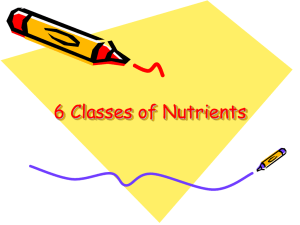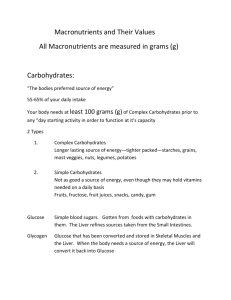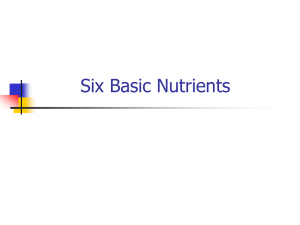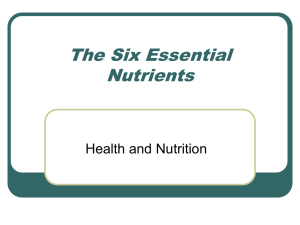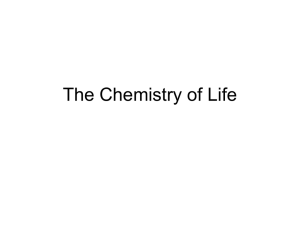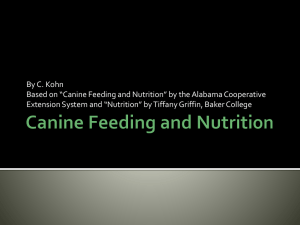Nutrition Lesson 1 Notes
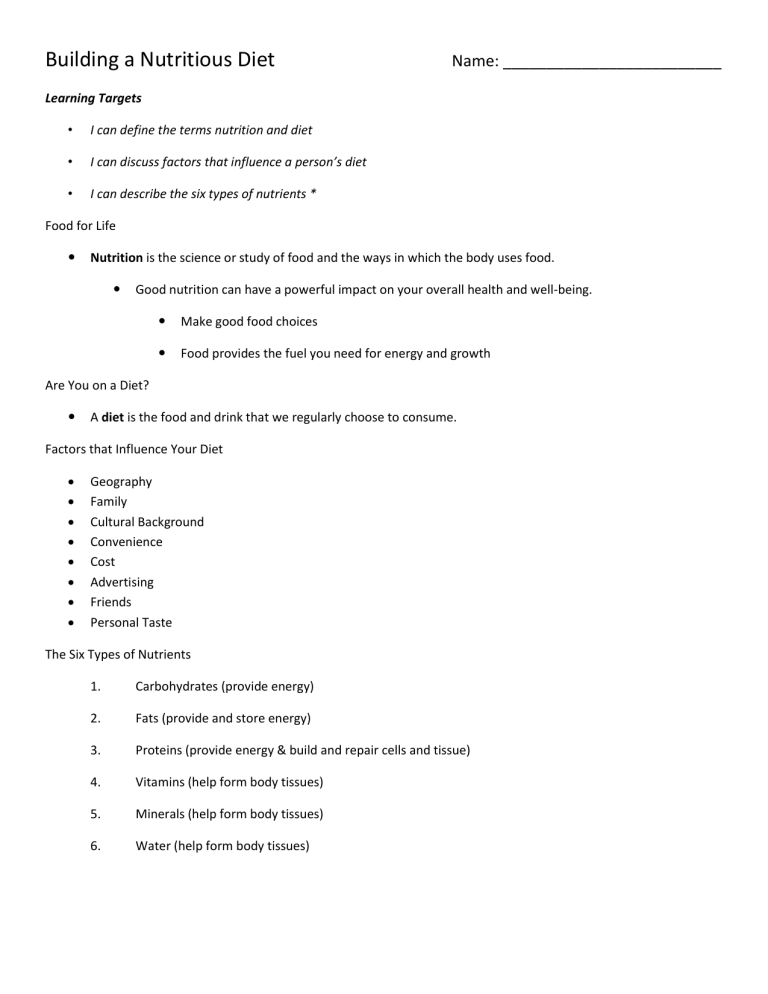
Building a Nutritious Diet
Name: _________________________
Learning Targets
• I can define the terms nutrition and diet
• I can discuss factors that influence a person’s diet
• I can describe the six types of nutrients *
Food for Life
Nutrition is the science or study of food and the ways in which the body uses food.
Good nutrition can have a powerful impact on your overall health and well-being.
Make good food choices
Food provides the fuel you need for energy and growth
Are You on a Diet?
A diet is the food and drink that we regularly choose to consume.
Factors that Influence Your Diet
Geography
Family
Cultural Background
Convenience
Cost
Advertising
Friends
Personal Taste
The Six Types of Nutrients
1. Carbohydrates (provide energy)
2.
3.
Fats (provide and store energy)
Proteins (provide energy & build and repair cells and tissue)
4.
5.
Vitamins (help form body tissues)
Minerals (help form body tissues)
6. Water (help form body tissues)
What is a calorie?
The energy obtained from carbohydrates, proteins, and fats is measured in units called calories.
Calorie = unit of energy available in foods
Where do Calories Come from
Carbohydrates provide 4 calories per gram
Proteins provide 4 calories per gram
Fats provide 9 calories per gram
Carbohydrates (CHO)
Carbohydrates are the starches and sugars that provide the body with most of its energy.
There are two types of CHO’s – simple and complex
60% of the calories you eat should come from CHO’s, mainly from complex carbohydrates
Proteins
Proteins are needed to build, repair, and maintain body cells and tissues, particularly muscle. They also provide energy.
Examples of protein include: meat, fish, poultry, eggs, milk, cheese, nuts, and dry beans.
Proteins are made up of amino acids. Amino acids along with proteins make up the building blocks of life
There are 22 amino acids in proteins, your body can make 14.
The other 8, called essential amino acids, must come from the foods you eat.
It is important to get all the essential amino acids in your diet.
Complete vs. Incomplete proteins
Foods from animal sources are complete proteins- they contain all 8 essential amino acids.
Foods from plants are incomplete proteins- they lack at least one essential amino acid.
Vegetarians must eat a variety of incomplete proteins in order to get all their essential amino acids.
Fats
Fats are a source of energy and are essential for vital body functions.
Insulate body temperature changes
Cushion body organs
Carry fat-soluble vitamins
Promote healthy skin and normal growth
Excess fat is stored in body as extra weight
Saturated fats are fats that are solid at room temperature.
Ex. Butter; stick margarine; and fats in meat, poultry, & dairy products.
Eating a lot of foods that are high in saturated fats increases the risk of heart disease.
Unsaturated fats are fats that are liquid at room temperature and come mainly from plant sources.
Ex. Vegetable oils, nuts, olives, and avocados
Unsaturated fats are good for you and are believed to lower risk of heart disease.
Trans fats are unsaturated fats that have been chemically altered to make them solid. Trans fats are linked to heart disease.
Fats Breakdown
Saturated fats = bad
Unsaturated fats = good
Polyunsaturated fats
Monounsaturated fats
Trans fats = really really bad
Vitamins
Vitamins are substances needed in small quantities that help regulate body functions, including helping the body process other nutrients and fight infections.
Two groups of vitamins a) Water-soluble vitamins (include all the B vitamins and vitamin C)
Can’t be stored in the body
Need from daily diet b) Fat-soluble vitamins (vitamins D E K A)
Can be stored in the body until needed
Don’t have to be eaten daily
Minerals
Minerals are elements needed in small quantities for sturdy bones and teeth, healthy blood, and the regulation of daily elimination.
Water
Water is the most common nutrient, making up about 60% of the body.
Carries other nutrients through the body
Helps digestion
Removes waste from the body
Lubricates joints
Keeps body from overheating
FYI: 80-90% of most fruits and veggies are water
The amount you need daily is affected by your diet, your activity level, and by how hot and humid the weather is.
Reading a Nutrition Fact Label
Look for foods that have low daily value % (below 5%) for fats, cholesterol, & sodium, & choose foods whose labels show high % (20% or above) of fiber, vitamins, and minerals.
Putting Nutrients in Your Diet
No two people need exactly the same amount of each type of nutrient.
There are four factors that affect your nutrient needs:
Age
Body size
General health
Exercise
